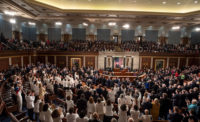Seven or eight years ago, I wondered why a new commuter rail line was being built to connect San Francisco with towns 90 minutes north on Highway 101 deep into Sonoma County, Calif. As I rolled past a lot of small towns and multi-acre homes with grazing horses, I thought, "This is car country," and the train could turn out to be an underused waste of money.
After a more thorough look at the area over the years, however, I noticed more recently built subdivisions, new condos and apartment buildings. The county was booming. And the train system, as a whole, counted half a million passenger boardings through the first nine months of 2019, with 15 passengers or so getting on at about 8 am each weekday at stations as far north as Rohnert Park, Cotati and Petaluma.
So it became clear the new commuter train would carry store clerks or accountants or electricians who had moved further from the Bay Area for affordability. They didn’t want to brave Highway 101 traffic every workday, opting instead for a long but comparatively low-stress commute. More importantly, does more mass transit help people without jobs literally commute their way out of poverty?
Why I want to know if the journey out of poverty most often begins on a train, a bus or in a car.
Infrastructure has always been an American Rorschach test, in which everyone sees something different as to what it is and what it is supposed to do.
Congress and the government of President Joe Biden will be developing a federal infrastructure program this year to roll out under the administration’s Build Back Better motto. Environmental quality, cleaner energy, highway safety, power grid resilience and school rebuilding all are likely to figure into the legislation. Justice will be on the agenda, too.
In the 1960s, we often spoke of infrastructure in terms of developing nations and their vast populations of rural poor. We knew that better water and transportation decreased child mortality, increased school enrollment and helped lift economic prospects for families, especially women.
In America, the tie between infrastructure and poverty became clearer over time. In the early 1990s, noted Columbia University sociology professor Herbert J. Gans thought the best solution to poverty would be an updated New Deal that repairs or replaces failing infrastructure and allows what's old to function better—particularly in job creation.
Now the U.S. has arrived at an infrastructure crossroads where the decisions about what to build will be graded in future reviews by the American Society of Civil Engineers—and by history.
Transportation, in particular, is closely associated with class mobility and the boosted ability of people to hold jobs that sustain them and their families, and allow them to rise out of poverty. That’s why the calculation of how much goes to urban transit or highways is so important. And why I want to know if the journey out of poverty most often begins on a train, a bus or in a car.
Without transportation, we know, life frays.
In Pennsylvania, the Scranton Area Community Foundation found that many residents in the state's northeastern region—especially lower-income or elderly residents, “could not access employment, were missing doctor appointments, could not get their children to child care and could not participate in social, religious, and cultural events, all as a result of the lack of transportation.” Residents “were stuck—literally and figuratively,” the foundation reported.
Scholars who note the amount of suburban poverty in the U.S. say transit needs to extend further into suburbs than it already does—and that catchment areas and stations need to be rethought to serve all suburbanites.
Journalists and advocates for mass transit have cited a widely publicized study by university scholars at Harvard and Berkeley. In it, the authors implied that individuals who commute less than 15 minutes to work in a commuting zone have significantly higher rates of upward mobility, and that commute time is a significant predictor of who moves up the economic ladder.
Other studies have added more elements—and nuance—to the discussion.
A University of Texas PhD dissertation comparing metropolitan areas showed that regular access to cars, and an individual circumstance that allows the poor to use automobiles, is more important than the quality and efficiency of the highway network. While transit networks provided access to better-paying jobs, the transit system did not help make those jobs accessible to someone whose only way of reaching the train or bus was to walk.
Transit v. Driving Subsidies Weighed
Another study, published in 2016 by authors in the Dept. of Civil and Environmental Engineering at the University of Maryland, took matters a step further. It analyzed data showing modal and spatial mismatches in public transportation systems in the Washington, D.C. area. The authors asked whether a better way to help the poor is by subsidizing public transportation or by subsidizing solo or shared driving.
Boring into statistics to try to untangle all the factors at play, the authors found that low-income households with slightly better paid jobs marginally benefit from driving subsidies but benefit more from transit subsidies, especially for bus commuting. They also wrote that some areas of the city where low-income jobs are supposed to grow remain unserved by any public transportation—which could increase the existing spatial and modal mismatch.
When infrastructure talks failed during the Trump Administration, former White House chief of staff Mark Meadows said that Democrats refused to accept Republican insistence that, as a condition for moving forward, Democrats had to agree to drop or relax environmental reviews to speed the time from funding to construction.
All haste is needed in getting to work on an infrastructure bill and moving it through the legislative process—but not in getting the actual construction started. Neither speedy environmental review nor shovel readiness should be the priority.
Of course, the ridership and traffic patterns in Northern California and everywhere else have dropped off dramatically during the pandemic. So the transit-use calculations post-pandemic will be different.
Building back better means building back smarter, with the right transportation projects built the right way—locally welcomed, and on time and on budget.
What we build will be an example of our power to add to or detract from a just economic future, and must represent the sum of our public works wisdom.






Post a comment to this article
Report Abusive Comment